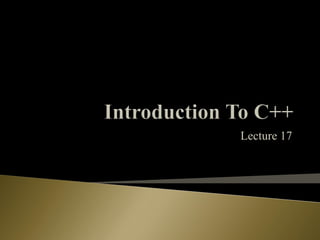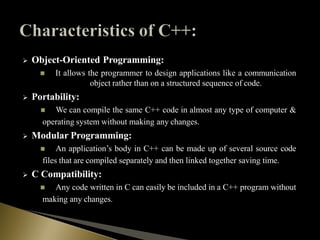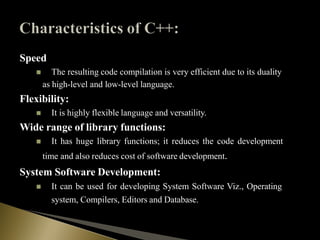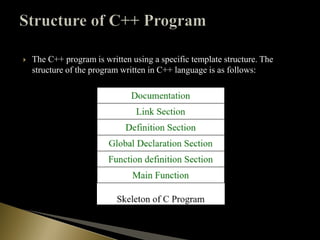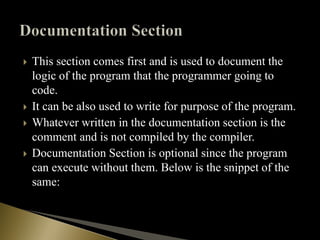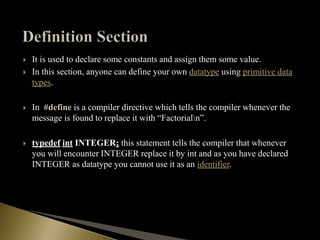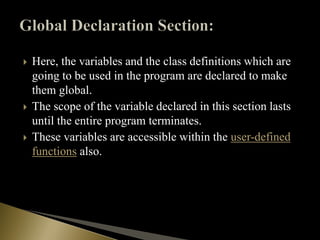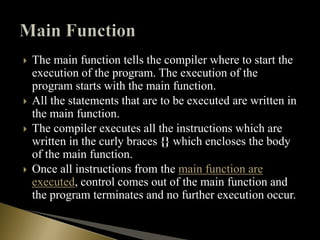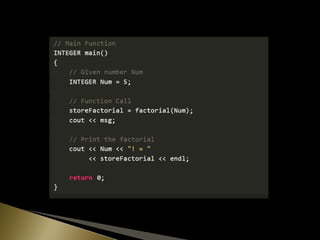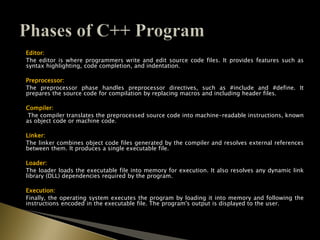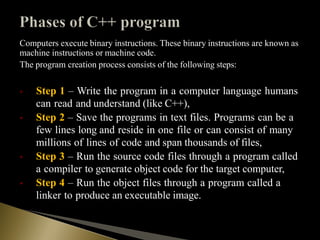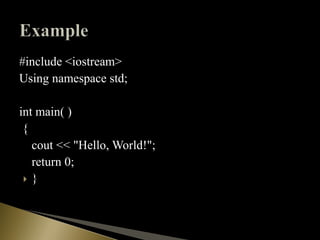The document discusses the process of creating and executing C++ programs. It describes the main steps as writing code in a text editor, preprocessing and compiling the code to generate machine-readable instructions, linking object files, loading the executable, and executing the program. Key parts of the process include preprocessing with header files and macros, compiling to machine code, linking code from multiple files, and loading/running the executable. The main goal is to explain how human-readable C++ code is converted into a binary executable that can run on computers.
